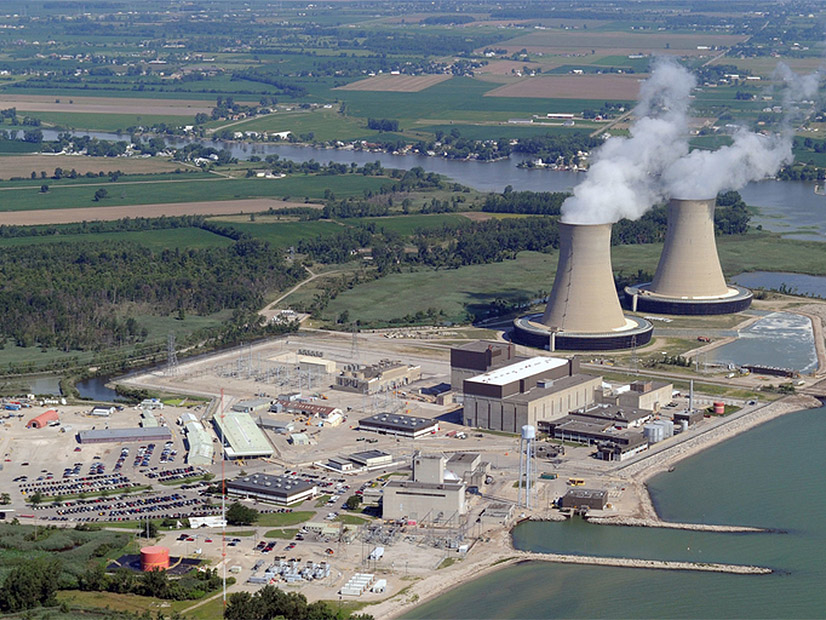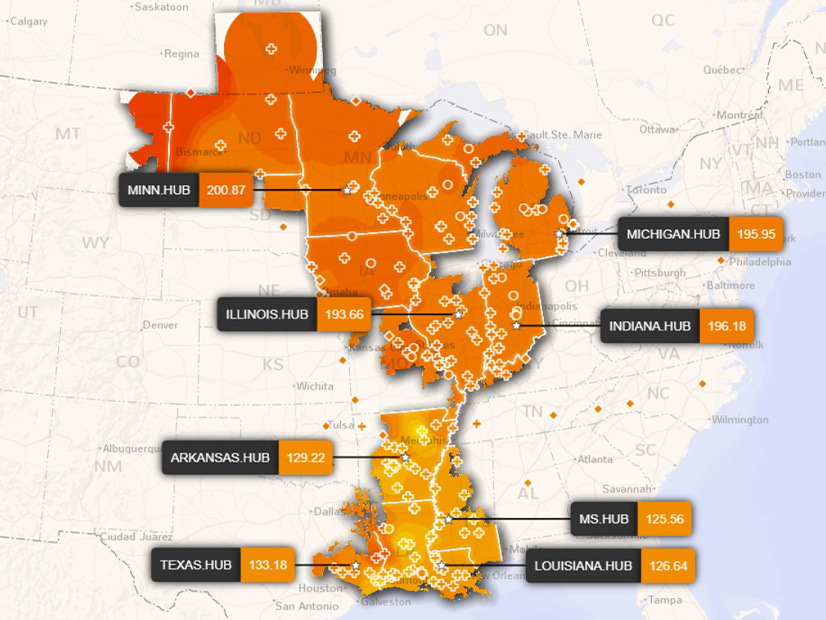CARMEL, Ind. — MISO instated maximum generation procedures Thursday to manage a pervasive heat wave blanketing its footprint.
The grid operator called a maximum generation event to begin at noon ET as temperatures climbed to 95 degrees Fahrenheit and above throughout most of its system. It de-escalated the emergency into a maximum generation warning effective at 7:30.
MISO topped 122 GW of demand during the evening peak, short of its all-time peak demand record of 127 GW, set July 20, 2011. By 5 p.m., hub LMPs were around $220/MWh in MISO Midwest and $150/MWh in MISO South.
Ahead of the demand surge, MISO forecast a 127-GW peak by 5 p.m. with a little more than 121 GW in cleared offers.
MISO previously enacted a footprint-wide capacity advisory and conservative operations Monday, before a maximum generation alert for Thursday. As it geared up for the day, the RTO asked all members to update their market data with their best available information. MISO said it was contending with forced generation outages paired with abnormally high temperatures and higher load than forecast a day prior.
DTE Energy’s 1.1-GW Fermi 2 nuclear plant south of Detroit was offline during the week’s hottest weather. The company was forced to perform an unscheduled outage because of a coolant leak.
“We’ll see how this week shapes up. We’ve already sent out several hot weather alerts and capacity advisories,” MISO Director of Market Administration John Harmon said ahead of the emergency declaration and the most intense heat at the Reliability Subcommittee’s meeting Tuesday.
The Tennessee Valley Authority also struggled alongside MISO in the heat. On Thursday, the U.S. Energy Information Administration reported that TVA’s 27 GW in net generation was no match for 32 GW in forecasted demand. The federal utility had been relying on gigawatts of imports from MISO and its other neighbors since Sunday.
August had already been peppered with tricky operating conditions and alerts related to summer heat stressing MISO’s grid.
The RTO also declared conservative operations instructions to members in Wisconsin and parts of its northern footprint Aug. 3. At the time, MISO said it was experiencing tight capacity, a loss of generating units and low wind production.
MISO issued another round of conservative operations for MISO South on Aug. 11 and again on Aug. 14. In that timeframe, South was also subjected to multiple hot weather alerts and capacity advisories.
Before this week, MISO had not encountered a summertime energy emergency; it avoided ordering up load-modifying resources during another heat wave in late July. (See MISO Preps for Heat Wave, Anticipates Annual Demand Peak.) The blistering temperatures wrought a 121-GW peak July 27, which until now stood as MISO’s annual peak. Otherwise, systemwide load averaged 86 GW in July.
MISO achieved a little more than 3-GW all-time solar peak July 25. At the Reliability Subcommittee meeting, Harmon said the RTO expects to keep eclipsing solar output records as utilities bring more facilities online.



